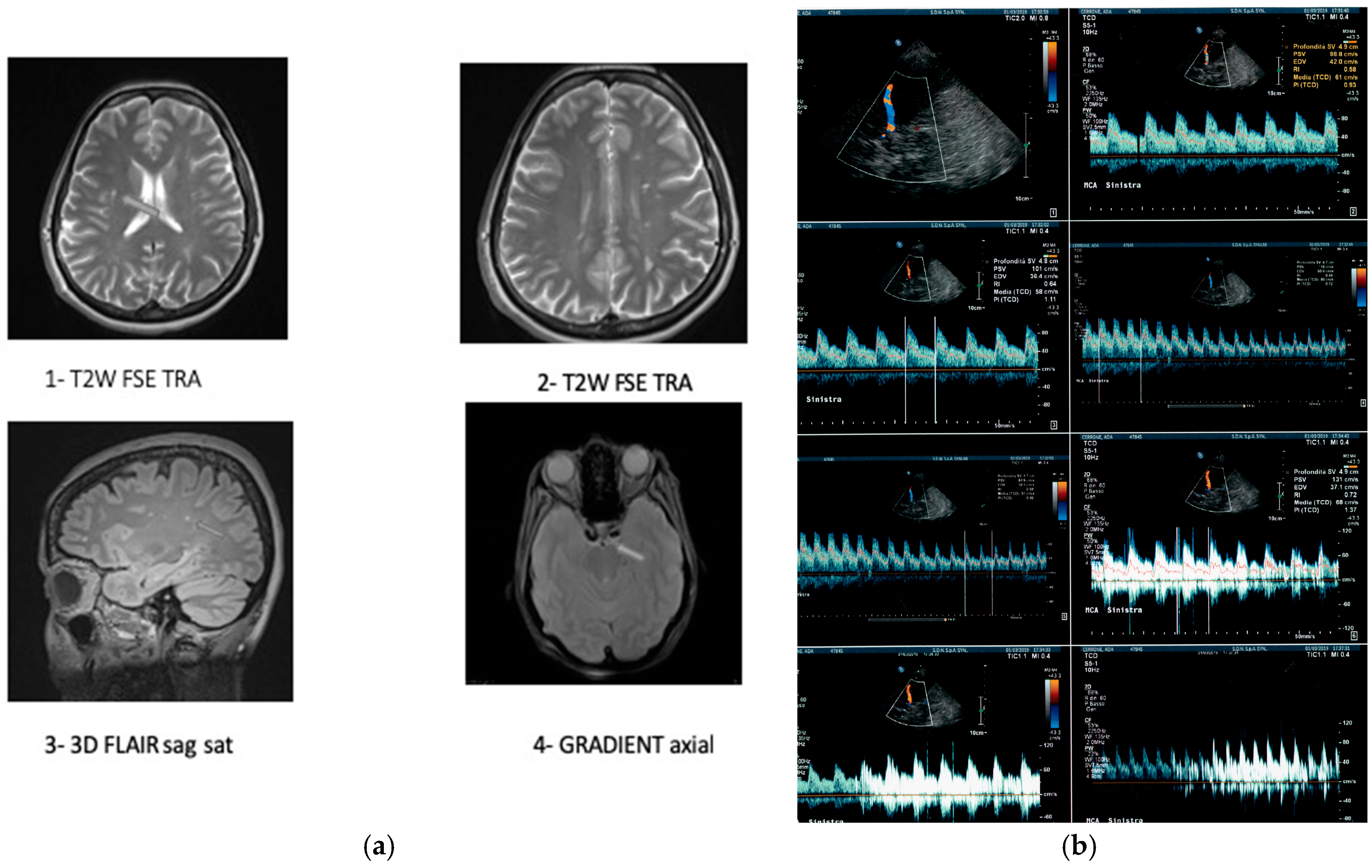Persistent Idiopathic Facial Pain Associated with Patent Foramen Ovale with Right- to-Left Shunt and Hyperhomocysteinaemia: When a Symptom Can Save a Life †
1. Background
2. Presentation of the Case
3. Conclusions
Conflicts of Interest
References
- Kumar, P.; Kijima, Y.; West, B.H.; Tobis, J.M. The Connection Between Patent Foramen Ovale and Migraine. Neuroimaging Clin. N. Am. 2019, 29, 261–270. [Google Scholar] [CrossRef] [PubMed]
- Agostoni, E.C.; Longoni, M. Migraine and cerebrovascular disease: Still a dangerous connection? Neurol. Sci. 2018, 39 (Suppl. 1), 33–37. [Google Scholar] [CrossRef] [PubMed]
- Shi, Y.J.; Lv, J.; Han, X.T.; Luo, G.G. Migraine and percutaneous patent foramen ovale closure: A systematic review and meta-analysis. BMC Cardiovasc. Disord. 2017, 17, 203. [Google Scholar] [CrossRef] [PubMed]
- Spencer, B.T.; Qureshi, Y.; Sommer, R.J. A retrospective review of clopidogrel as primary therapy for migraineurs with right to left shunt lesions. Cephalalgia. 2014, 34, 933–937. [Google Scholar] [CrossRef] [PubMed]

© 2019 by the authors. Licensee MDPI, Basel, Switzerland. This article is an open access article distributed under the terms and conditions of the Creative Commons Attribution (CC BY) license (http://creativecommons.org/licenses/by/4.0/).
Share and Cite
Adamo, D.; Coppola, N.; Fortuna, G.; Calabria, E.; Carbone, R.; Mignogna, M.D. Persistent Idiopathic Facial Pain Associated with Patent Foramen Ovale with Right- to-Left Shunt and Hyperhomocysteinaemia: When a Symptom Can Save a Life. Proceedings 2019, 35, 43. https://doi.org/10.3390/proceedings2019035043
Adamo D, Coppola N, Fortuna G, Calabria E, Carbone R, Mignogna MD. Persistent Idiopathic Facial Pain Associated with Patent Foramen Ovale with Right- to-Left Shunt and Hyperhomocysteinaemia: When a Symptom Can Save a Life. Proceedings. 2019; 35(1):43. https://doi.org/10.3390/proceedings2019035043
Chicago/Turabian StyleAdamo, Daniela, Noemi Coppola, Giulio Fortuna, Elena Calabria, Roberto Carbone, and Michele D. Mignogna. 2019. "Persistent Idiopathic Facial Pain Associated with Patent Foramen Ovale with Right- to-Left Shunt and Hyperhomocysteinaemia: When a Symptom Can Save a Life" Proceedings 35, no. 1: 43. https://doi.org/10.3390/proceedings2019035043
APA StyleAdamo, D., Coppola, N., Fortuna, G., Calabria, E., Carbone, R., & Mignogna, M. D. (2019). Persistent Idiopathic Facial Pain Associated with Patent Foramen Ovale with Right- to-Left Shunt and Hyperhomocysteinaemia: When a Symptom Can Save a Life. Proceedings, 35(1), 43. https://doi.org/10.3390/proceedings2019035043



